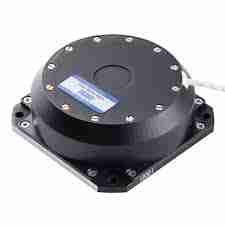The fibre optic gyroscope market has seen a surge in innovation and development in recent years, primarily driven by demand for accurate, reliable navigation systems across aerospace, defense, autonomous vehicles, and marine applications. FOGs operate on the Sagnac effect to detect angular velocity, offering high precision with no moving parts, making them ideal for GPS-denied environments. As global focus shifts toward autonomous navigation, space exploration, and industrial automation, recent developments in materials, miniaturization, signal processing, and integration technologies are redefining the trajectory of the FOG market.

Miniaturization and Compact Design Enhancements
A key development trend in the FOG industry is the miniaturization of components without compromising performance. Advancements in optical fiber materials, packaging technologies, and micro-optics have enabled manufacturers to reduce the size and weight of FOG systems. This is particularly beneficial for emerging applications such as drones, unmanned ground vehicles (UGVs), and portable surveying equipment, where space constraints are critical.
Companies are now offering compact gyroscopes suitable for integration into micro-platforms, expanding the utility of FOGs in robotics, wearable navigation gear, and mobile mapping solutions. These small form factor gyroscopes maintain competitive accuracy and resilience against environmental stressors like vibration and temperature variation.
Improved Cost Efficiency Through Production Advancements
Recent manufacturing developments have significantly improved cost-efficiency in FOG production. Techniques such as automated fiber winding, laser welding, and photonic integrated circuits (PICs) have reduced production time and material wastage. As a result, FOG systems are becoming more affordable for commercial applications, which were previously dominated by lower-cost, but less accurate, alternatives like MEMS gyroscopes.
Some manufacturers have also adopted modular production approaches, enabling faster customization and integration across varied platforms, reducing both development cycles and system integration costs for clients across sectors.
AI and Digital Signal Processing Integration
The integration of artificial intelligence (AI) and advanced digital signal processing (DSP) has emerged as a transformative development in the FOG space. AI algorithms are now being employed to correct drift, predict movement patterns, and improve calibration accuracy in real time. DSP advancements allow for better noise filtration and enhanced signal-to-noise ratios, resulting in greater measurement fidelity and operational reliability.
These capabilities are proving particularly valuable in dynamic environments such as aviation and maritime navigation, where continuous adjustments and error corrections are vital for system safety and accuracy.
Enhanced Performance for Aerospace and Space Missions
The aerospace and space industries have driven several recent FOG advancements, especially in terms of radiation-hardened designs and ultra-high reliability. Manufacturers are developing gyroscopes with extended operational lifespans and resistance to radiation for satellite and deep-space missions. This includes the use of specialized optical fibers, protective coatings, and redundant system architecture.
FOGs are also being increasingly adopted in launch vehicles, space probes, and low-Earth orbit (LEO) satellites where real-time, inertial navigation is crucial. These high-performance systems support accurate orbital positioning, attitude control, and payload stabilization under extreme conditions.
Integration With Hybrid Navigation Systems
Recent market developments show an increasing integration of FOGs with other navigation technologies, such as GPS, LiDAR, and inertial measurement units (IMUs). These hybrid systems offer superior accuracy and robustness by cross-validating positioning data, making them ideal for autonomous vehicles, submarines, and railway systems.
For example, in autonomous mobility applications, combining FOGs with LiDAR allows for seamless operation even when GPS signals are obstructed or unavailable, such as in tunnels or urban canyons. Hybrid solutions are quickly becoming the industry norm, and FOGs are central to enabling this technological synergy.
Strategic Collaborations and Joint Ventures
Recent years have witnessed a rise in strategic collaborations between FOG manufacturers, aerospace companies, and research institutions. These partnerships are facilitating the co-development of application-specific gyroscopes and accelerating time-to-market. Some companies have also entered into technology-sharing agreements to improve their manufacturing capabilities or expand their geographic reach.
These collaborations are particularly prevalent in countries seeking to modernize their defense and aerospace industries, with governments playing a supportive role through R&D funding and policy incentives.
Certification and Standardization Progress
Another important development is the pursuit of industry certifications and standardization. With FOGs being deployed in mission-critical applications, achieving compliance with standards such as MIL-STD, ISO, or DO-160 has become a priority for many manufacturers. These certifications ensure compatibility, safety, and performance consistency across diverse applications.
Certification also opens the door to procurement by government agencies and international organizations, enhancing the global competitiveness of certified products.
Increased Adoption in Commercial Sectors
While FOGs have traditionally been limited to defense and aerospace, recent technological and cost improvements have facilitated their adoption in commercial sectors. Industries like mining, oil and gas, surveying, and infrastructure development are now leveraging FOGs for precision orientation and geospatial tracking.
Moreover, the rise of smart cities and autonomous logistics has created demand for high-accuracy sensors in intelligent transport systems. FOGs are increasingly being seen as critical components in this evolving commercial technology stack.
Conclusion
The fibre optic gyroscope market is experiencing rapid evolution, powered by innovations in miniaturization, cost reduction, signal processing, and hybrid integration. Recent developments are not only improving the performance and accessibility of FOG technology but also expanding its applicability across a wide array of industries. As the need for precise, reliable, and resilient navigation systems continues to grow, these advancements are positioning fibre optic gyroscopes as indispensable tools for the future of autonomous mobility, space exploration, and industrial automation.




